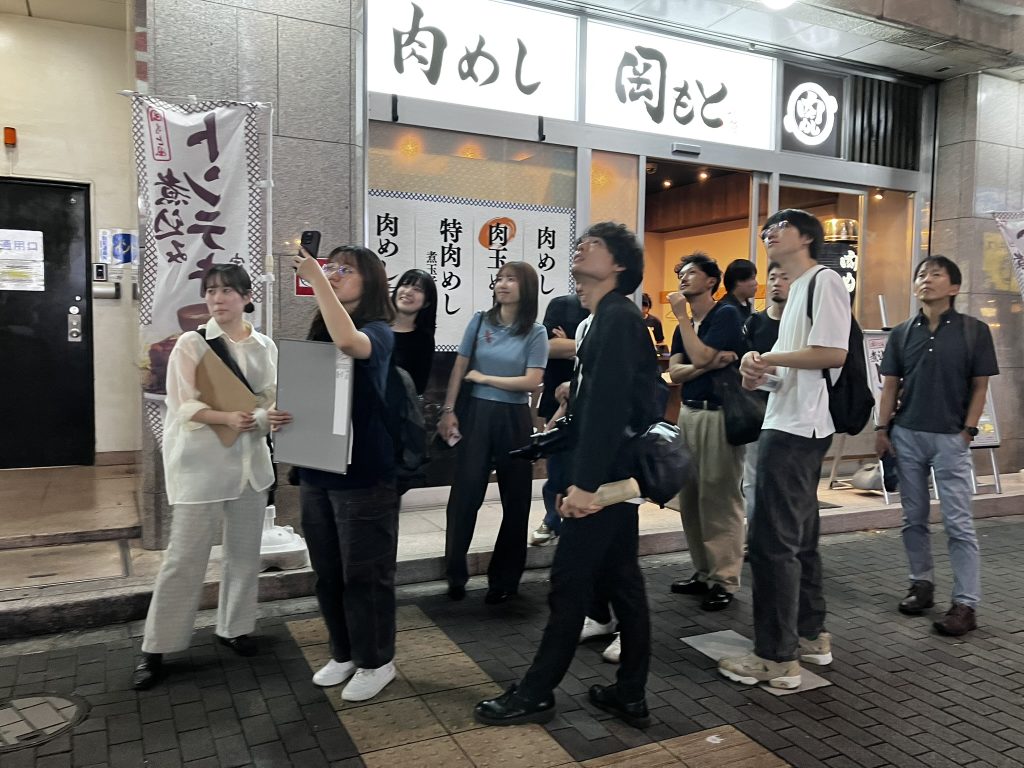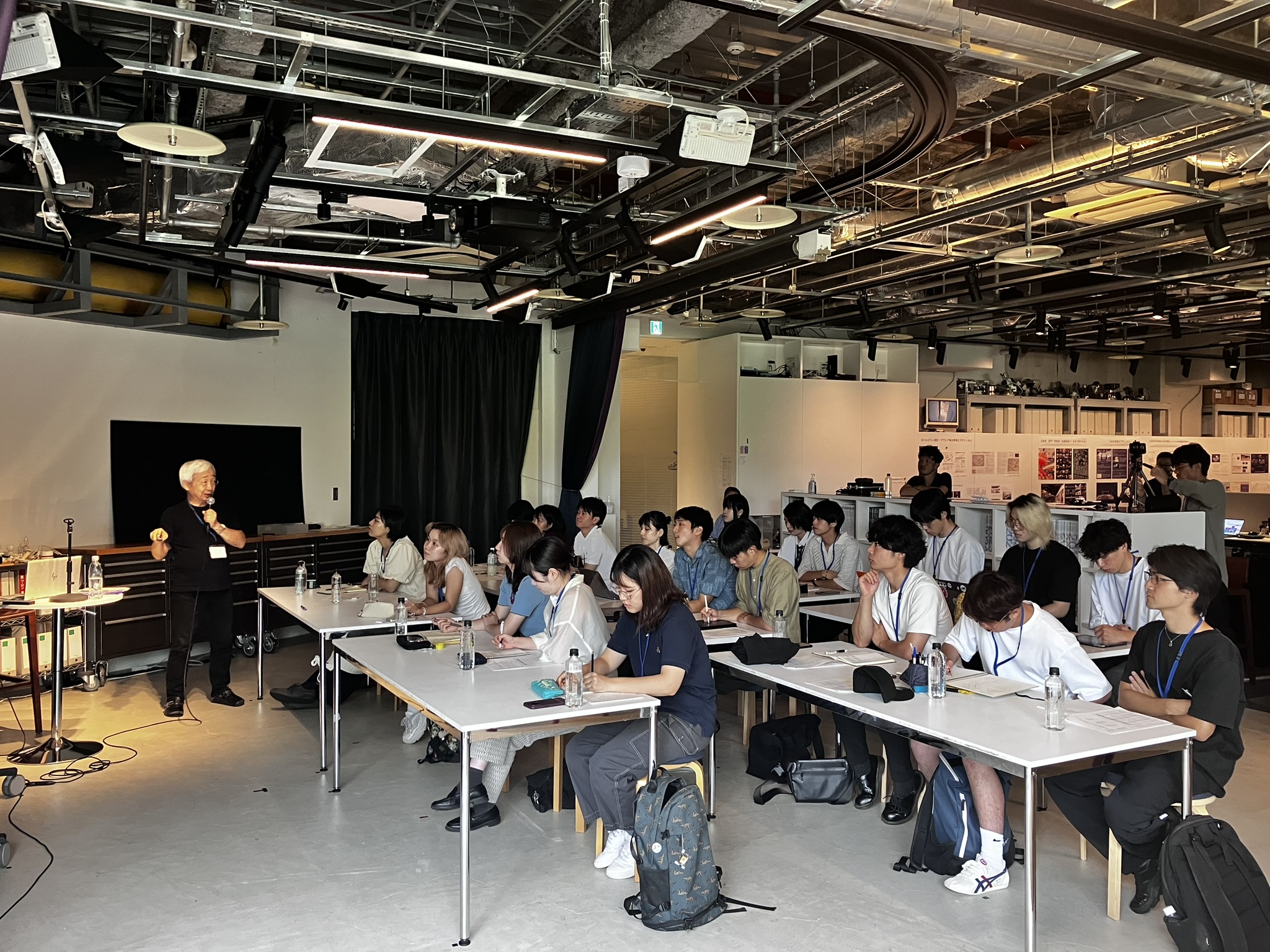3-day Student Workshop
2024.09.21-23 Noriko Higashi
Kaoru Mende’s third annual Lighting Design Workshop took place over the September long weekend. Twenty students from diverse university backgrounds came together to delve into the foundational principles of lighting design.
Launched in 2022, this intensive three-day workshop brings together professional lighting designers to share their expertise with aspiring students. The jam-packed schedule, running from 10 AM to late in the evening, features eight lectures by LPA staff, two guest lectures, hands-on luminaire sessions, a city night walk, group projects, and final presentations. The program is designed to provide a comprehensive learning experience, combining theoretical knowledge with practical application. A dedicated team of 19 LPA staff members poured countless hours into crafting this enriching curriculum.
■Day 1: Lectures and City Night Walk
Our workshop provided a comprehensive overview of lighting design, covering concepts, processes, technical terms, and real-world examples. External experts were also invited to discuss the significant role of lighting design in urban development and the potential negative impacts of poorly planned lighting, such as light pollution.
In the afternoon, students were divided into three groups and embarked on night walk of different neighborhoods: Yurakucho, Azabu-juban & Roppongi, and Shimbashi & Shiodome. Over the two-hour walk, they were able to apply their newfound knowledge of illuminance, brightness, glare, color temperature, and overall lighting quality to real-world environments. Recognizing that perceptions of light can vary, students were encouraged to discuss their personal “heroes” and “villains” of light at various points during the tour.
The first day concluded with a group dinner, providing a relaxed atmosphere for participants to bond and build relationships.


■Day 2: Group Discussion & Group Project
On the second morning, we began by reviewing the previous night’s walk. Students discussed the photos they had taken and decided on the “heroes” and “villains” of light in the areas they visited. Each group engaged in lively discussions, expressing diverse opinions freely without feeling pressured to reach a consensus. They also developed improvement plans for areas they identified as problematic and summarized their findings on a single board.
In the afternoon, students tackled a group project titled “Nightscape in 2050: New Light and Us.” Compared to previous years, we significantly reduced the time spent summarizing the walking tour and allocated more time for group projects. Students were given just three hours to complete the project and present their findings. Encouraged to think creatively and use various presentation formats, the groups produced a diverse range of outcomes, including performances incorporating body movements and LEDs, proposals based on their observations from the night walk, and presentations using models and sketches with light sources.
While imagining a future as distant yet relatively near as 2050 was challenging, it seemed that several students were able to form a clear vision of their ideal night scenery within the short timeframe.


■Day 3: Lectures, Hands-on Luminaire Sessions and Individual Project
On the final morning, we held three lectures. A particularly engaging session involved hands-on demonstrations with various lighting fixtures, sparking numerous questions from the students who were eager to learn more about the equipment they were seeing for the first time. The informal setting, where students could easily approach the instructors for questions or comments, fostered a lively and interactive atmosphere.


In the afternoon, students presented their individual projects. They had been given five themes to choose from:
1) Lighting design for Katsura Rikyu as your living space,
2) Lighting design for Villa Savoye by Le Corbusier,
3) Revitalizing Asakusa (Sensoji Temple, Nakamise Street, Denboin-dori) with light,
4) Designing a tea room of light, and
5) Proposing a lighting environment for homes, underground spaces, or convenience stores in 2050.
Students responded with up to three A3-sized sheets, and all participants voted for their favorite proposals. Awards including the Best Award and the Kaoru Mende Award were given.
The presentations demonstrated a deep understanding of lighting design, with students conducting thorough analyses of Asakusa’s lighting environment, carefully examining the spatial characteristics of Villa Savoye, exploring light as a psychological and spatial material in tea rooms, envisioning new possibilities for convenience stores, and contemplating the future of residential and urban lighting.
The diverse perspectives and creative approaches to lighting design led to stimulating discussions and made it difficult to select the top-ranking proposals. The workshop provided a valuable opportunity for students from various academic backgrounds to share their insights and learn from one another.


The workshop concluded with a reflection session where we gathered feedback from each participant. After three intensive days, the students took full advantage of the final get-together, catching up with peers they hadn’t had a chance to talk to, seeking feedback from LPA staff on their individual projects, and discussing future career plans. It appears they were eager to make the most of every moment of the workshop.
The Kaoru Mende / Lighting Design Workshop has been evolving year by year, with each iteration bringing new improvements, content adjustments, and program refinements.
While details for the next workshop are still under discussion, our staff debriefing has generated many exciting new ideas.
Even though the most recent workshop has just concluded, we’re already looking forward to creating an even more engaging experience for future participants. We are also committed to expanding the program’s reach and attracting a larger number of students. We hope you’ll continue to follow our work and join us for future workshops. (Noriko Higashi)















